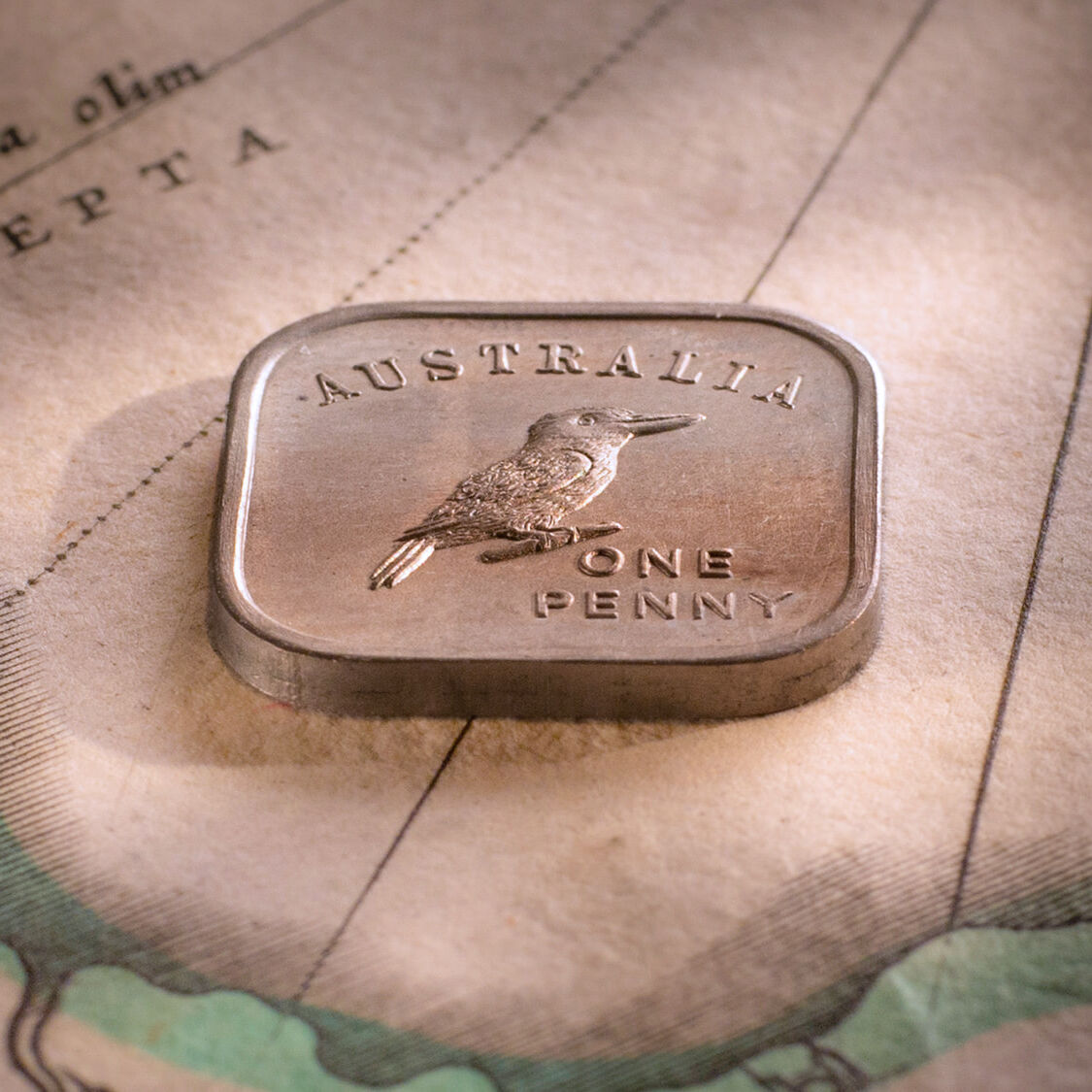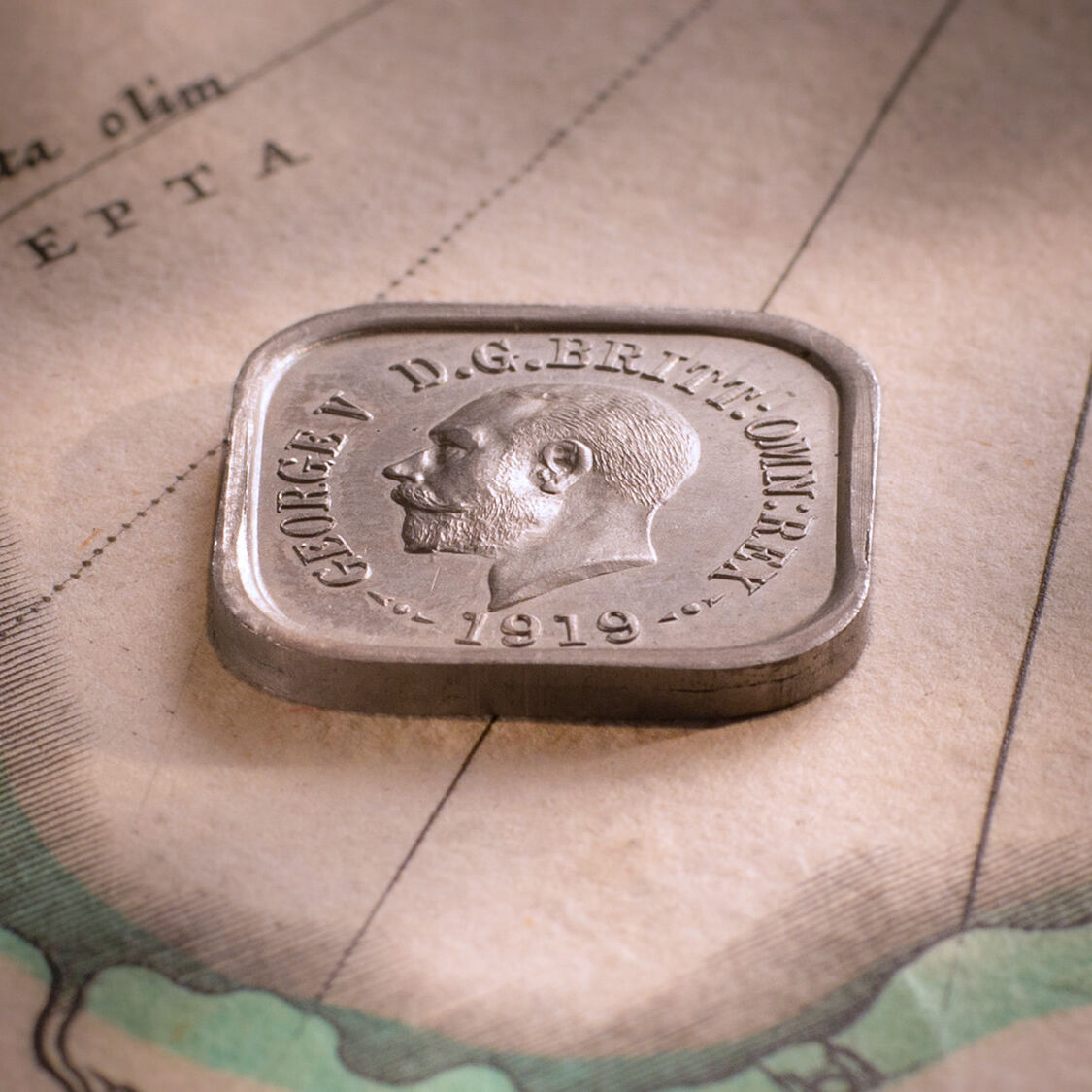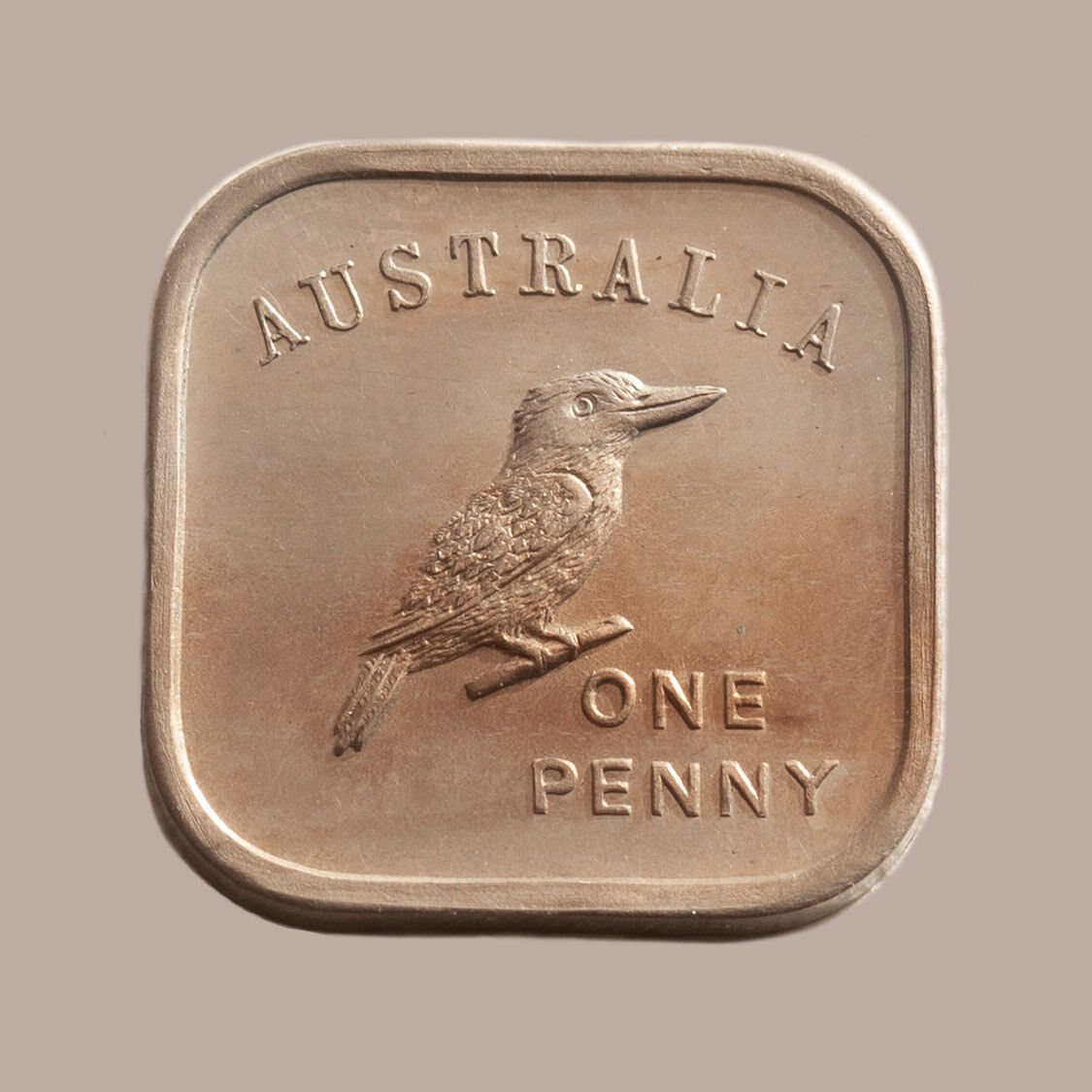The 1919 Kookaburra Square Penny, extremely rare and featuring the unique type 3 design



The reverse of this Type 3 Kookaburra Square Penny features a sleek bird on a short branch. The value 'ONE PENNY' is modern in style. The design is unique. No other Square Penny shares the design of the Type 3. The design detail is crisp, the fields are proof-like and enhanced by soft antique toning. The edges are solid.
This Square Penny was struck in the first year of testing at the Melbourne Mint - 1919 - and features a sleek kookaburra with the value 'ONE PENNY' in a modern style.
The design is unique. No other Square Penny has this bird or style of lettering.
The coin has an additional feature that collectors enjoy. It is extremely rare for we would be lucky to sight a Type 3 Square Penny on the market every two to three years.

The obverse shows an uncrowned effigy of George V within a circular legend. The Square Pennies were test pieces and were not struck to exacting standards, this coin the absolute exception to those most commonly found. The surfaces are proof-like and the edges are solid.
So if you are excited by the prospect of owning a 1919 Type 3 Square Penny then you can be even more excited by the prospect of owning this particular example because it has been brilliantly struck and brilliantly preserved.
You would be forgiven for thinking that the coin was struck to proof quality for both obverse and reverse fields are mirror-like and highly reflective.
The technical shots shown above confirm its glorious state.
The history of the Kookaburra Square Penny.
Australia entered a modern age post World War I and for many Australians, it was a time for breaking out, of questioning and changing old values and behaviour and enjoying the good life.
It was a time of great change. People forgot the ‘old’ and embraced the ‘new’ in an attempt to leave the hardship and struggles of the war behind them. New technology was being created, like toasters and cars, things that today we take for granted. The fashion world was exploding, Australians embracing great change in their styles of dress.
Australians were identifying with their own culture, keen to lessen the emotional and cultural ties with Great Britain.
Creating a new, totally Australian coinage was a part of the deal which is why the Government floated the idea of the Kookaburra Penny envisaging a coin that would be unique to Australia.
The Government's plan was to discard the British-styled penny and halfpenny and to create a coin with a typically Australian design featuring the nation's native bird, the kookaburra.
To maximise impact, a new shape was planned with the move from circular to square. And bronze was to be discarded and a new metal taken up, that of cupro-nickel.
The proposal was contentious in that the monarch, King George V, was to be depicted on the obverse without a crown.
Some say it was the rumblings of a Republican movement way ahead of its time.
Tests began at the Melbourne Mint in 1919 and continued for three years with the coins gifted to dignitaries and Government officials to assess their reaction.
Sadly, in 1921, the scheme fell apart. The final decision not to proceed seems to have been based mainly on one consideration – the large number of vending machines then in operation requiring a circular coin.
Today there are approximately 200 kookaburra coins held by private collectors, making it on a par for rarity with the 1813 Holey Dollar, the nation's first silver coin. And the 1852 Adelaide Pound, the nation's first gold coin.
The best thing for collectors is that the 200 kookaburra pennies do not bear the same design.
The Melbourne Mint tested thirteen different styles introducing enormous interest, personal choice and procurement challenges into the series, for some designs are far rarer than others.
© Copyright: Coinworks
